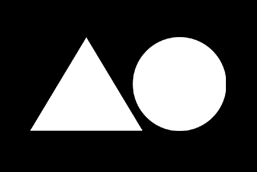AGI Open 2013

Went to AGI Open at the Barbican with some of the GDS design team last week, had a great time. Ben’s done a proper account of the two days over on his blog but I thought I’d note down a couple of thoughts here.
Roundheads vs Cavaliers
This was a debate between minimalist designers Sean Perkins, Sascha Lobe, Dean Poole and… what, expressive(?) designers Marian Bantjes & Stefan Sagmeister. I guess this was meant to be a lighthearted discussion to puncture the formality of the conference early on, and Sagmeister & Poole made a good effort of keeping things lively, but Sagmeister’s early comment of something like “I can’t believe we’re still having this conversation in the 21st century” pretty much nailed it. Because the entire debate was carried out on the subject of style, and any argument about there being a single ‘correct’ aesthetic for graphic design in 2013 is nonsense, but the principles of simplicity and rationalism are probably more relevant than ever.
We’re inflicting a lot of damage on the environment, that’s been about as proven as anything ever gets. It also doesn’t look as if our politicians or business leaders are in any rush to try and fix it. As designers, our industry has contributed a lot to creating both the persuasion and the products for the endless consumption that’s destroying the planet. We can’t go back in time and change that, but the design decisions we make now can have a direct effect on reducing that environmental damage. With that in mind, I was pretty disappointed to see the phrase ‘less is more’ being championed by showing an inch-thick corporate report filled with pages containing nothing but flat colour. I don’t care about that minimalism, but I do care about a kind of minimalism that argues for reducing the page-count, or maybe just sending the document out as a few well-written paragraphs in an email.
I’d also have been interested in getting into the debate over ownership of public space (an area of discussion that wasn’t mentioned in this session, nor disappointingly in the later interview with Pierre Bernard). I don’t really know if it’s just me who thinks applying modernist reductionism to corporate communication is a good way of engineering a space for public dialogue… There’s a great quote by traffic engineer Hans Monderma in this old Eye piece about Relational Aesthetics, which I’m slightly recontextualising here: “when drivers stop looking at signs and start looking at other people, that driving becomes safer. All those signs are saying to cars ‘this is your space, and we have organised your behaviour so that as long as you behave this way, nothing can happen to you’… That is the wrong story.”
Anyway.
Good bits from other sessions:
Someone comes in and asks you to do something, you don’t say that you don’t know how to do that - you start asking questions! They call it research now, I don’t like that.
Margaret Calvert
(When I was starting out) my main concern was my disappointment with the everyday
…
No-one ever says; 'do what you want, we need it next week
…
Metahaven are making some of the most exciting contemporary design work around right now, but what do you do with it?
…
Like it or not, we (designers) exist in the market, and you need to find the bit of the market where you do the least damage
Peter Saville
Design is the education of desire
Kenya Hara
Quotes were scribbled down in a conference so the wording might not be exact, but the gist is there.
If you want to chat more about stuff like this, send me an email or get in touch on Twitter.
You can pretend it's 2005 and subscribe to my RSS feed